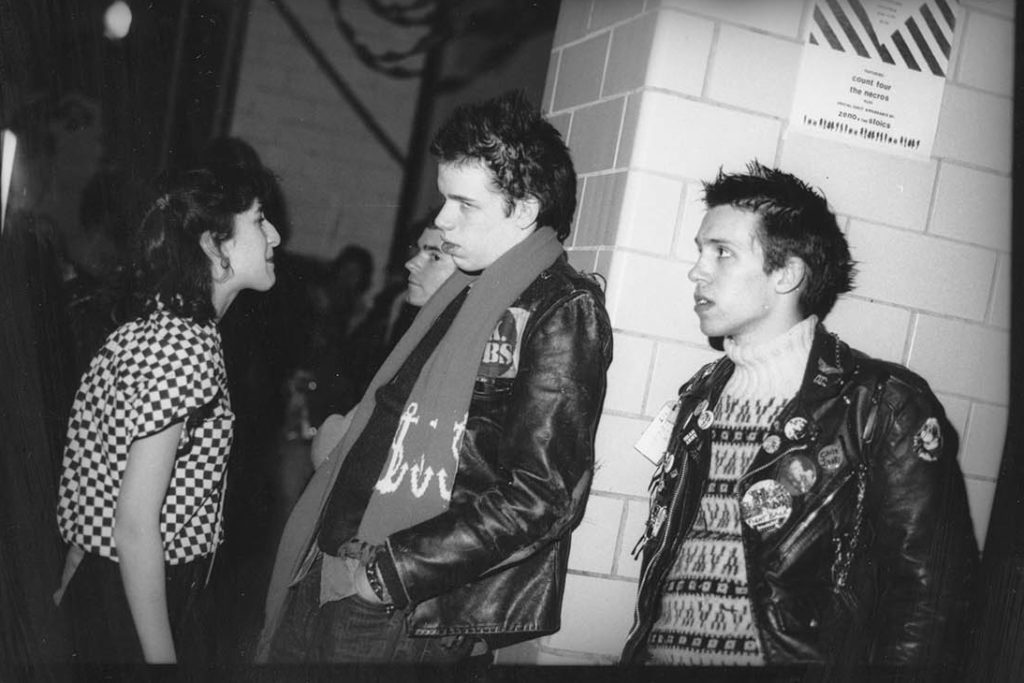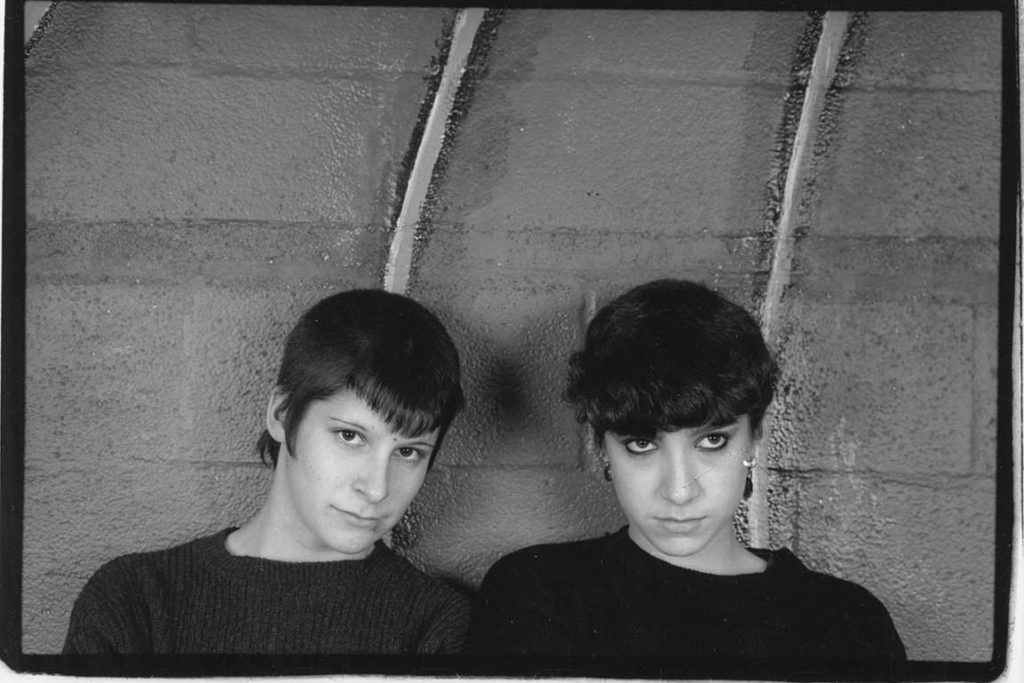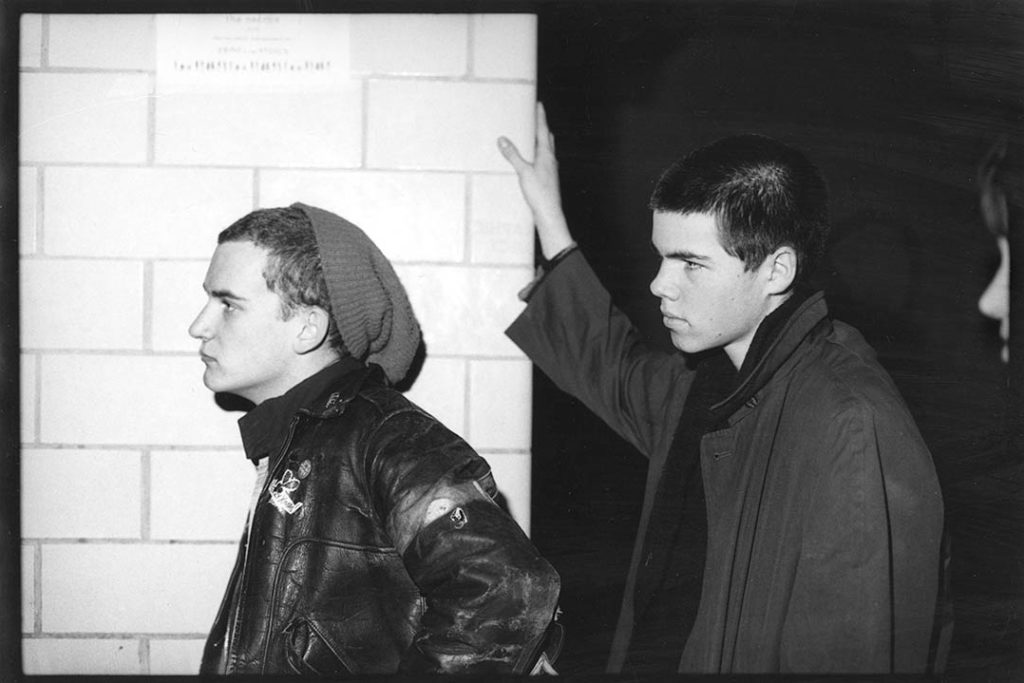When the photography department at Arlington’s H-B Woodlawn needed some extra funding, then-teacher Lloyd Wolf held a couple of yard sales.
But those “sucked in terms of making money,” Wolf, a noted local photographer, recalls. So, in the early 1980s, they threw some dances.
Though the most successful dance, as Wolf recalls it, featured a southern rock band called the Dixie Road Ducks, there was also interest in the raw, energetic performances coming out of the burgeoning punk scene.
“There were punk kids who went to that school,” said Ian MacKaye, who was a punk kid himself at the time.
Minor Threat, a band whose members included MacKaye and Jeff Nelson, the co-founders of famed independent punk label Dischord Records, played the school cafeteria on May 9, 1981 and Oct. 30, 1982 in six- and four-band lineups.
“I was exposed to something way beyond Elvis Costello and kind of new wave poppy stuff,” said Amy Pickering, a student at H-B Woodlawn around that time who went to some of the punk shows. She would go on to form Dischord band Fire Party (active from 1986-1990), and to work at Dischord Records for more than 20 years.
The H-B Woodlawn shows represent one of many stories of punk linked to Arlington, too many to capture in one article. It was a time when “if you wanted something to come out, you totally had to do it yourself,” Pickering said. For many, Arlington became somewhere to live, practice, collaborate and create as punk expanded in the D.C. area.
MacKaye moved to Arlington from his parents’ northwest D.C. home in Oct. 1981. He and four others had three conditions in their joint search for a living space.
It had to be a detached house, “because we wanted to play music in the basement,” affordable, because they were making something like $175 a month each, and safe, so that their predominantly high school-aged friends could make it to the house from a bus or train stop without incident, MacKaye said.
The first place they toured — a four-bedroom detached house in Lyon Park that rented for $525 each month — seemed to fulfill all of those criteria.
“Arlington afforded sort of a… neutral territory, you know, [we] didn’t get much grief from anybody,” MacKaye said.
Dischord House, as it came to be known, also acted as the headquarters for Dischord Records. MacKaye now owns the home, though he moved back to D.C. after living in Arlington for 21 years — an amount of time he hadn’t anticipated spending in the suburbs as a fifth-generation Washingtonian.
Dischord House may well have been the “first of our generation… punk house,” MacKaye said, but there was already “all this early punk rock stuff” in Arlington when they moved in, and there was more to come.
“I’d say by the late ’80s and early ’90s… other group houses started to pop up, friends of ours would come out,” MacKaye said. It was “a brief period of time where there [were] all these pockets. We didn’t all spend tons of time with each other, but it was nice to know that you might pop by.”
Punk activist collective Positive Force D.C., founded in 1985, established a home base in Arlington after holding its first meetings near Dupont Circle. They first moved to a house on N. Fairfax Drive, but development on that block pushed them closer to Virginia Square in November 1988.
For the nearly 12 years Positive Force spent in that second house, rain would drip in around the windows, so they grew plants in the windowsills.
“It was kind of our bargain to do our thing — [you let us] run a radical political organization out of our house, we won’t ask you to fix stuff,” Positive Force co-founder Mark Andersen said.
Jenny Toomey and Kristin Thomson ran their record label, Simple Machines, out of Positive Force House’s second floor kitchen in 1990. They soon moved into the first of multiple houses the label would occupy in Arlington before shutting down in 1998.
Living near other outposts, like Dischord and Teen-Beat Records, fostered information sharing, Thomson said.
“We were trading information, asking questions, trying to sort out things to the best of our abilities quite often,” Thomson said.
Exchanges among people within and beyond Arlington helped produce the Simple Machines Mechanic’s Guide. That project was conceived as “a sort of second edition” to a Dischord/Positive Force benefit record insert that covered, among other topics, how to put out a seven-inch record, Thomson said.
The Mechanic’s Guide, in various editions, would be mailed out thousands of times.
“It became like a little ‘Consumer Reports,’ in some ways,” Toomey said. “We know a bunch of independent labels that still exist used the guide for their first releases.”
The guide reflects the do-it-yourself attitude that pervaded the punk scene and, more broadly, independent music in the D.C. area and outside of it.
“Punk was about starting something from nothing,” said Cynthia Connolly, a photographer, artist and curator who worked “on and off” for Dischord. “Literally we would go to the Ballston Common Mall and go into the dumpsters and get the cardboard,” to cut up and use to mail out records.
Connolly documented the D.C. punk scene as it looked between 1979 and 1985 in a book she co-compiled and published in 1988, entitled “Banned in D.C.” The book is now in its seventh edition.
“It’s almost like a storybook story, and it’s kind of romantic in a way because the bands [then] really influenced some of the bands today,” Connolly said.
The DIY attitude in many cases seemed to extend to the punk bands’ desired sound, which was “raw,” said Don Zientara, who founded Inner Ear Studio (today at 2701 S. Oakland Street) in the late ’70s and has recorded numerous punk bands. “That just sort of fit in with the fact that I had [at the time] very little equipment, and some of it was kind of questionable, cheap… take your own word for it.”
Wakefield High School alum Mark Robinson started going to shows, which primarily took place in D.C., when he was 15 or 16. “Seeing other kids playing in punk rock shows” made the idea of being in a band seem possible, he said.
“Before that, you would see like the band Kiss or something and that just seemed like an unattainable thing,” he said.
Robinson would form indie rock band Unrest and Teen-Beat Records in the mid-1980s, while still in high school.
Teen-Beat operated out of a house in Arlington for much of the 90s, by which time the layout that characterizes much of the area today had yet to fully form. When Clarendon bar and indie rock venue Galaxy Hut first opened in 1990, for instance, “there was a vacant Sears across the street. There was nothing there, rent was super cheap,” said Lary Hoffman, who co-owns Galaxy Hut today.
As Andersen recalls it, “there was another Arlington that existed, and that was a much more humble Arlington.”
The second Positive Force House has been demolished, as have many of the other group houses, to make way for new developments. One known as Kansas House was vacated for that purpose in 2009.
Many members of the scene have dispersed to different locations and adopted new roles — Pickering lives in New York and Robinson is in Massachusetts, for instance, and Connolly works as Special Projects Curator for the county. Still, the DIY principles behind much of the activity Arlington played host to remain relevant.
When Toomey and Thomson compiled the Mechanic’s Guide, they certainly didn’t present the applications of their resourceful attitude as limited to their scene, or to music.
“There is nothing that you can’t do with a little time, creativity, enthusiasm and hard work,” the introduction to the guide’s 2000 edition reads. It concludes several pages later with a simple send-off: “Good luck!”
Thanks to Andrew Goodwin, Arlington-based podcaster / WednesdaysWithAndrew; photos courtesy © Lloyd Wolf / www.lloydwolf.com




